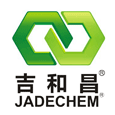Products Categories
| CAS No.: | 302-17-0 |
|---|---|
| Name: | Chloral hydrate |
| Article Data: | 27 |
| Molecular Structure: | |
|
|
|
| Formula: | C2H3Cl3O2 |
| Molecular Weight: | 165.404 |
| Synonyms: | Chloralhydrate (8CI);1,1,1-Trichloro-2,2-dihydroxyethane;2,2,2-Trichloro-1,1-ethanediol;Bi 3411;Chloral, monohydrate;Chloraldurat;TCA; |
| EINECS: | 206-117-5 |
| Density: | 1.814 g/cm3 |
| Melting Point: | 57 °C(lit.) |
| Boiling Point: | 96.3 °C at 760 mmHg |
| Flash Point: | 57.3 °C |
| Solubility: | 660 g/100ml in water |
| Appearance: | colourless crystals with a pentrating odour |
| Hazard Symbols: |
 T, T,  F F
|
| Risk Codes: | 25-36/38-39/23/24/25-23/24/25-11-36/37/38 |
| Safety: | 26-45-25-23-36/37-16-27 |
| Transport Information: | UN 3286 3/PG 2 |
| PSA: | 40.46000 |
| LogP: | 0.66730 |
- 483366-12-7(2S,4R)-1-Boc-2-cyano-4-hydroxypyrrolidine
- 361456-36-2METHYL (R)-(+)-ISOCYANATO-3-PHENYLPROPI&
- 5156-58-1N-(1-Benzyl-4-pipperidinyl)-N-phenylpropanamide HCl
- 81281-59-67-Benzylideneaminotheophylline
- 50288-62-5threo-Phenyl-2-piperidyl acetamide
- 82993-81-5D-threo-Ritalinic acid hydrochloride
- 47087-37-6Z-D-Glu-OMe
- 73441-42-6METHYL-5-CHLORO-2,2-DIMETHYLVALERATE
- 68439-39-4Poly(oxy-1,2-ethanediyl), alpha-(2-ethylhexyl)-omega-hydroxy-,
- 852475-26-4MC1568

| Conditions | Yield |
|---|---|
| In tetrachloromethane | 45% |
| With water Thermodynamic data; ΔH; | |
| With water | |
| In water |
- 473-34-7
N,N-dichloro-p-toluenesulfonamide

- 79-01-6
Trichloroethylene

A
- 302-17-0
chloral hydrate

B
- 83790-89-0
N-(2,2,2-trichloro-1-hydroxyethyl)4-methylbenzenesulfonamide

C
- 93018-67-8
N-(2,2,2-trichloro-1-p-toluenesulfonamidoethyl)-p-toluenesulfonamide

D
- 70-55-3
toluene-4-sulfonamide

| Conditions | Yield |
|---|---|
| With water; tin(IV) chloride at 20 - 22℃; for 1560h; Product distribution; other time, temperature, Lewis acid (AlCl3); | A .11 g B 37.9% C 2.7% D 2.9% |


| Conditions | Yield |
|---|---|
| With water; chlorine |

| Conditions | Yield |
|---|---|
| With sodium hypochlorite; water; boric acid |

| Conditions | Yield |
|---|---|
| With water Chlorieren; |

| Conditions | Yield |
|---|---|
| With water Chlorieren; |

| Conditions | Yield |
|---|---|
| With water; chlorine at 90℃; | |
| With water; iodine; chlorine at 90℃; |

| Conditions | Yield |
|---|---|
| With sulfuryl dichloride at 170℃; |
- 75-87-6
chloral

- 147624-92-8
2,2-Dihydroxy-3-oxo-pent-4-enoic acid tert-butyl ester

A
- 302-17-0
chloral hydrate

B
- 117917-40-5
2,3-Dioxo-pent-4-enoic acid tert-butyl ester

| Conditions | Yield |
|---|---|
| In acetone Equilibrium constant; Thermodynamic data; ΔH; |

- 87-99-0Xylitol
- 745-65-3Prostaglandin E1
- 76-05-1Aceticacid, 2,2,2-trifluoro-
- 78281-72-8Nepafenac
- 54-31-9Furosemide
- 93-14-1Guaifenesin
- 5571-36-8Estradiene dione-3-keta
- 723-46-6Sulfamethoxazole
- 104987-11-3Tacrolimus
- 141-53-7Sodium formate
- 8001-54-5Quaternary ammonium compounds, alkylbenzyldimethyl, chlorides
- 9003-39-8Povidone
- 10161-34-9Trenbolone acetate
- 402957-28-2Telaprevir
- 68-19-9Cyanocobalamin
Chemistry
IUPAC Name: 2,2,2-Trichloroethane-1,1-diol
Following is the structure of Chloral hydrate (CAS NO.302-17-0):

Molecular Formula: C2H3Cl3O2
Molecular Weight: 165.4
EINECS: 206-117-5
Storage temp.: 0-6 °C
Water Solubility: 660 g/100 mL
Index of Refraction: 1.545
Molar Refractivity: 28.85 cm3
Molar Volume: 91.1 cm3
Density: 1.814 g/cm3
Flash Point: 57.3 °C
Melting point: 57 °C(lit.)
Surface Tension: 59.3 dyne/cm
Enthalpy of Vaporization: 39.15 kJ/mol
Boiling Point: 96.3 °C at 760 mmHg
Vapour Pressure: 25.6 mmHg at 25 °C
Product Categories of Chloral hydrate (CAS NO.302-17-0): Miscellaneous; Organics; Method 551EPA; Method 8240; 500 Series Drinking Water Methods; 8000 Series Solidwaste Methods; EPA
Stability of Chloral hydrate (CAS NO.302-17-0): Stable, but may be air or light sensitive. Incompatible with alcohols, cyanides, iodine, strong bases, carbonates.
Canonical SMILES: C(C(Cl)(Cl)Cl)(O)O
InChI: InChI=1S/C2H3Cl3O2/c3-2(4,5)1(6)7/h1,6-7H
InChIKey: RNFNDJAIBTYOQL-UHFFFAOYSA-N
Uses
Chloral hydrate (CAS NO.302-17-0) is mainly used as pesticides,pharmaceutical intermediates, also used to produce Chloroform and chloral.
Toxicity Data With Reference
| 1. | mrc-smc 15 mmol/L | MUREAV Mutation Research. 141 (1984),19. | ||
| 2. | sce-hmn:lym 54 mg/L | AGTQAH Annales de Genetique. 24 (1981),105. | ||
| 3. | orl-mus TDLo:10 mg/kg:CAR | CDPRD4 Cancer Detection and Prevention. 9 (1986),279. | ||
| 4. | orl-wmn TDLo:465 mg/kg:EYE,BPR | AMSVAZ Acta Medica Scandinavica. 223 (1988),269. | ||
| 5. | orl-hmn LDLo:4 mg/kg | PHBTH* Pharmacology: Basis of Therapy. 3 (1967),132. | ||
| 6. | orl-hmn TDLo:300 mg/kg:CNS,CVS | BMJOAE British Medical Journal. 2 (1977),994. | ||
| 7. | unr-cld TDLo:48 mg/kg/6H-I:BPR AACRAT 65,691,86 | |||
| 8. | unk-man LDLo:103 mg/kg | 85DCAI Poisoning; Toxicology, Symptoms, Treatments. 2 (1970),73. | ||
| 9. | unr-inf TDLo:160 mg/kg/3D-I:CVS AACRAT 65,691,86 | |||
| 10. | rec-cld TDLo:97 mg/kg:CVS AACRAT 65,691,86 | |||
| 11. | orl-rat LD50:479 mg/kg | TXAPA9 Toxicology and Applied Pharmacology. 18 (1971),185. | ||
| 12. | skn-rat LD50:3030 mg/kg |
Consensus Reports
Reported in EPA TSCA Inventory. EPA Genetic Toxicology Program.
Safety Profile
A human poison by ingestion and possibly other routes. Poison experimentally by ingestion, intravenous, and rectal routes. Moderately toxic by subcutaneous, parenteral, and intraperitoneal routes. Experimental reproductive effects. Human systemic effects by ingestion: general anesthetic, cardiac arrhythmias, blood pressure depression, eye effects, coma, pulse rate increase, arrhythmias. Human mutation data reported. Questionable carcinogen with experimental carcinogenic and tumorigenic data by skin contact. A sedative, anesthetic, and narcotic. Combustible when exposed to heat or flame. When heated to decomposition it emits toxic fumes of Cl−.
Hazard Codes:  T
T F
F
Risk Statements: 25-36/38-39-23/24/25-11-36/37/38
R25 :Toxic if swallowed.
R36/38:Irritating to eyes and skin.
R39:Danger of very serious irreversible effects.
R23/24/25:Toxic by inhalation, in contact with skin and if swallowed.
R11:Highly flammable.
R36/37/38:Irritating to eyes, respiratory system and skin.
Safety Statements: 26-45-25-23-36/37-16-27
S26: In case of contact with eyes, rinse immediately with plenty of water and seek medical advice.
S45:In case of accident or if you feel unwell, seek medical advice immediately (show the label whenever possible.)
S25:Avoid contact with eyes.
S23:Do not breathe vapour.
S36/37:Wear suitable protective clothing and gloves.
S16:Keep away from sources of ignition.
S27:Take off immediately all contaminated clothing.
RIDADR: UN 3286 3/PG 2
WGK Germany: 2
RTECS: FM8750000
HazardClass: 6.1(b)
PackingGroup: III
Specification
Chloral hydrate (CAS NO.302-17-0) is also named as ,1,1-trichloro-2,2-ethanediol; 2,2,2-Trichloro-1,1-ethanediol; aquachloral; bi 3411; chloraldurat; dormal; Escre; felsules; hydral; trichloroacetaldehyde hydrate; Trichloroacetaldehyde Monohydrate; TCA,and so on.
-
Premium Related Products




